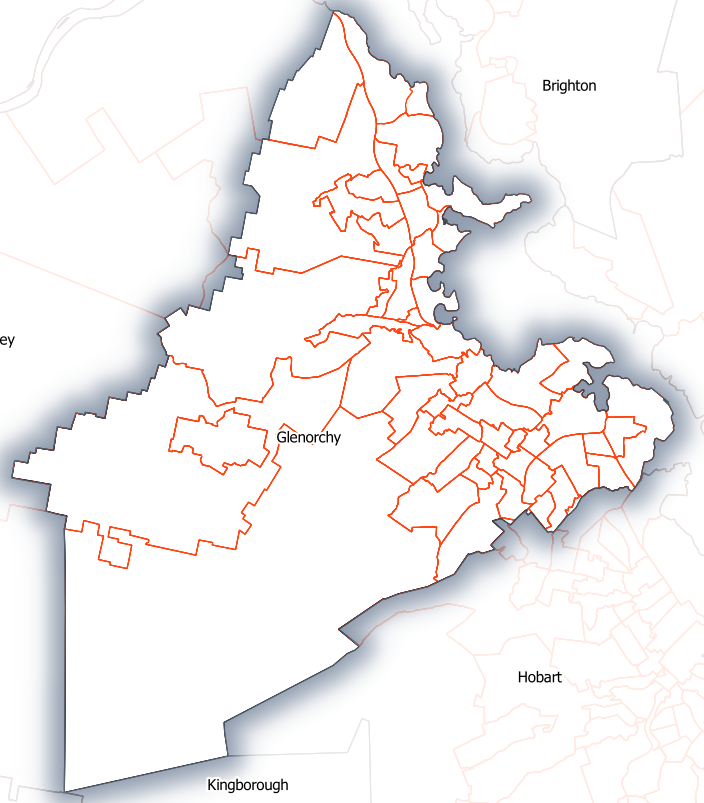2023 POPULATION FORECAST REVIEW
Tasmania population forecasts
The population Tasmania in 2021 was just shy of 568,000. The population is forecast to grow by 61,300 persons to pass 629,300 by 2046.
Version 5.1.0 Published June 2023
Population forecasts for Tasmania are now available.
These forecasts for Tasmania set a state-level constraint for our for Small Area Forecast information (SAFi), which provides a more detailed view of population and dwelling growth at local areas.
Menu
Insights behind our population and dwellings forecasts.
Key Findings
The population Tasmania in 2021 was just shy of 568,000. The population is forecast to grow by 61,300 persons to pass 629,300 by 2046.
- Tasmania is forecast to account for 1% of Australia's population growth in the next 5 years. This is forecast growth of 26,500 persons by 2026.
- Tasmania is comprised of four SA4's. Hobart SA4 is forecast to account for 54% of the States growth, followed by Launceston and North East which is forecast to account for 22% of the States growth.
- The largest proportion of dwelling growth throughout the forecast period is greenfield development and high-rise developments in Hobart CBD. High-rise growth is increasing due to the topographical constraints of the city.
Small Area Forecasts are now available at our micro geography.
National and State population forecast
A new census cycle means new 2021 ‘Tops-Down’ national to state to SA4 forecasts based on up-to-date macro-level population and economic assumptions. For more information on our ‘Tops-Down’ forecast assumptions and results, read our National and State Population Forecast Review.
Learn more
Why trust our forecasts
If your organisation is planning for the future, at some point you'll need to rely on a population forecast.
.id's population forecasts are an independent view of population that fit within the national narrative of growth, and consider the overall capacity of local areas to sustain the population.
Our team has over 25 years experience in population forecasting across the country. Through our tops-down and bottoms-up approach we go into extensive research to how a place is changing into the future. Learn about our process here.
How we compare to State Government population projections
The Department of Treasury and Finance, of the Tasmanian State Government produce population projections. In 2019, Treasury published population projections which have since had an interim update after the 2021 Census of Population and Housing. These interim forecasts jump-off at 2021 ERP and apply the 2019 forecasts growth rates to each LGA. They have advertised a full update to be released in 2023. Their population projections can be found here.
The State government forecasts use a multi-series approach to forecasting which consider a range of potential outcomes. They produce a low, medium and high series, with medium being the most likely forecast scenario.
By contrast we produce a single scenario, small area forecast which is the most likely population and housing outcome based on all the available information at the time of publication. This includes, assumptions around fertility rates, mortality rates, overseas migration and interstate migration, which can be viewed in our National write-up. These assumptions at the National level filter right down to our micro geographic forecasts.
When compared to the Treasury population projections our forecasts are in-between the high and the medium scenarios. SAFi forecasts are 24,000 persons higher than the medium series and 42,000 less that the high series.
Why micro forecasts?
State government forecasts for Tasmania are available at LGA. Forecasts at LGA level can omit the nuance of place.
Tasmania is home to 31 LGA's, however our forecasts break the State down into 1,815 micro geographies to understand the timing and sequencing of development at this local scale, and thus the population change within each area.
Example of LGA boundary versus SAFi geography.

Commentary and analysis from our specialist team of population forecasters.
Meet the full team →
Do you work with local government?
If you're involved in planning local government services, we have a specialist population forecasting team that helps councils advocate for the needs of their community. Learn more about forecast.id here.
Public resources for local areas
Find resources for other parts of South Australia and Australia via our demographic resource centre.
Your questions answered
Do you have a question about our forecasts? You can submit a question to our team by emailing locationdecisions@id.com.au




